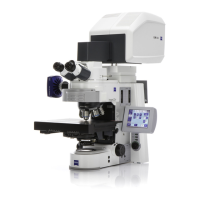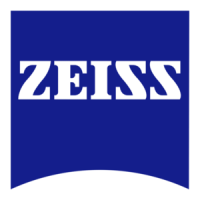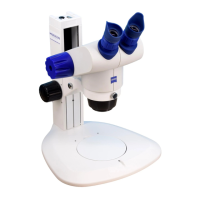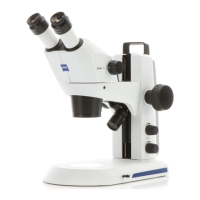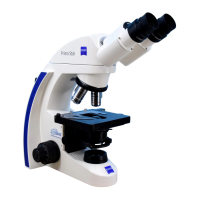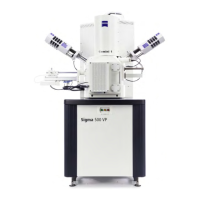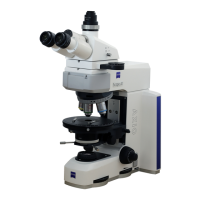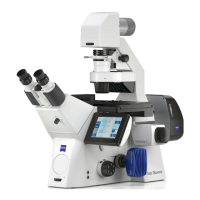What should I do if my Zeiss Medical Equipment is showing Error No. 827?
- SssandersSep 9, 2025
If your Zeiss Medical Equipment displays Error No. 827, it indicates Microscope EEPROM errors. Replace the Microscope to resolve this issue.
What should I do if my Zeiss Medical Equipment is showing Error No. 827?
If your Zeiss Medical Equipment displays Error No. 827, it indicates Microscope EEPROM errors. Replace the Microscope to resolve this issue.
What to do if Zeiss Medical Equipment shows Error No. 91?
If you're encountering a USB-Bus error (Error No. 91) on your Zeiss Medical Equipment, first check or replace the connected USB devices. If the problem persists, the Power Module may need to be replaced.
What does Error No. 450 mean on Zeiss Medical Equipment?
If your Zeiss Medical Equipment displays Error No. 450, it indicates that the Power Module cannot be detected due to a CAN-Bus error. To resolve this, check all cable connections at the Power Module. If the issue persists, you may need to replace the instrument or the Power Module.
What does Error No. 1236 mean on Zeiss Medical Equipment?
If your Zeiss Medical Equipment displays Error No. 1236, it indicates that the VLED-Limits are not within the specified range. Check all cable connections within the Illumination Module. If the problem persists, replace the instrument.
How do I fix Error No. 828 on Zeiss Medical Equipment?
If your Zeiss Medical Equipment displays Error No. 828, it indicates Microscope EEPROM errors. Replace the Microscope to resolve this issue.
What to do if Zeiss Medical Equipment is showing Error No. 434?
If your Zeiss Medical Equipment displays Error No. 434, it indicates an Instrument Base EEPROM error. Replace the instrument to resolve this issue.
How to fix Error No. 78 on Zeiss Medical Equipment?
If your Zeiss Medical Equipment displays Error No. 78, it indicates a Power Module EEPROM reading error. The suggested solution is to replace the Power Module.
What causes Error No. 79 on Zeiss Medical Equipment?
If your Zeiss Medical Equipment displays Error No. 79, it indicates a Power Module EEPROM writing error. To resolve this, replace the Power Module.
What should I do if my Zeiss Medical Equipment shows Error No. 1239?
If your Zeiss Medical Equipment displays Error No. 1239, it indicates an Illumination LED Module EEPROM error. Replace the instrument to resolve this issue.
How do I fix error 819 on my Zeiss Medical Equipment?
If your Zeiss Medical Equipment is showing Error No. 819, this indicates a CAN Bus error. Check all microscope cable connections. If the error persists, replace the Microscope.
Identifies the SL 800 slit lamp as the 'device' in the manual.
Specifies the applicability of the manual to the SL 800 slit lamp with reference number 2268-355.
Explains the manual's purpose, safety features, functions, and the importance of proper storage and accessibility.
Provides contact information for ZEISS Service for any questions or comments regarding the manual or the device.
Explains special markings and conventions used for clarity within the documentation.
Details conventions for lists, cross-references, bold type, and code formatting.
Defines conventions for warning messages (WARNING, CAUTION, NOTE) and action sequences.
Instructs users to observe instructions for use of any additional equipment used with the device.
Specifies that only trained personnel with ophthalmic knowledge should operate the device.
Defines the device's intended use for eye examinations and adherence to regulations.
The slit lamp is used for eye examinations, diagnosis, evaluation, and documentation of eye conditions.
The device is for general patient use, with specific exclusions for those unable to follow instructions or sit properly.
Outlines responsibilities for operating personnel, training, accessibility of manuals, and pre-use checks.
Requires reporting of incidents involving the device to the manufacturer and relevant authorities.
Details operator responsibilities regarding electrical safety, accessory connection, and ambient conditions.
Warns about potential eye damage from prolonged exposure to light and provides guidelines for safe usage.
Specifies that maintenance and repairs must be performed by authorized personnel according to ZEISS instructions.
Lists the standard components included in the SL 800 slit lamp package for installation.
Explains the various labels and symbols found on the slit lamp and its instrument base.
Illustrates and describes the main components of the SL 800 slit lamp, including observation unit and illumination unit.
Details the connectors and housing of the SL 800 power supply unit.
Identifies and explains the controls of the stereomicroscope, including eyepieces, binocular tube, and magnification changer.
Describes the power switch, indicator lamps, EcoMode, and configuration switch on the power supply unit.
Explains how to configure device functions using the four switches on the power supply unit.
Provides an overview of the slit lamp's functionality, components, and basic operation.
Highlights electrical and fire hazards associated with device installation and connecting additional devices.
Provides step-by-step instructions for physically installing the SL 800 slit lamp onto an instrument table or examination unit.
Illustrates and explains how to connect the slit lamp, power supply, and optional accessories using various cables.
Outlines pre-use inspections required to ensure the device is in good condition and functioning correctly.
Details the procedure for powering on the SL 800 slit lamp using the power switch on the power supply unit.
Covers mechanical risks from moving parts, falling parts, and trapped fingers during operation.
Explains how to adjust eyepieces for optimal viewing and image documentation, including diopter compensation.
Describes how to swivel the diffusor in or out for diffuse illumination of the anterior eye segment.
Guides on adjusting the illumination brightness, including steps to reduce illuminance on the fundus.
Instructs on correctly positioning the patient's head and body against the headrest for examination.
Provides general operating tips, including selecting slit dimensions, filters, and setting angles for retroillumination.
Explains how to read and adjust the angular difference between the illumination and observation units using scales.
Covers prerequisites for tonometry, including disinfection of prisms and proper handling of the instrument base.
Details the procedure for gonioscopy, including disinfection of contact glasses and adjusting the vertical inclination angle.
Describes the process of switching off the SL 800 slit lamp and disconnecting it from the mains supply.
Highlights electrical and biological hazards, and damage risks from improper cleaning agents and disinfectants.
Provides instructions and recommended utensils for cleaning optical components and surfaces of the device.
Details the wipe disinfection process for parts contacting the patient, using approved disinfectants like isopropyl alcohol.
Explains the importance of annual electrical safety testing in accordance with IEC 62353 due to aging and wear.
Provides step-by-step instructions for safely replacing fuses in the power supply unit, warning against incorrect fuse usage.
Guides on contacting ZEISS Service for software updates and the procedure for installing them via USB.
Explains how to create a log file using a USB drive for troubleshooting and service calls.
Details how to attach and replace paper pads on the chinrest for hygiene.
Lists common unexpected behaviors, their causes, and remedies for the SL 800 slit lamp.
Directs users to contact ZEISS Service or visit the website for support if problems cannot be solved.
States that the device does not have essential performance features as defined in IEC 60601-1.
Confirms compliance with 93/42/EEC Medical Devices Directive (MDD) and RoHS Directive.
Lists specific IEC and ISO standards that the device adheres to for safety and performance.
Specifies the device's classification regarding protection class, ingress rating, and instrument type.
Provides technical specifications for slit illumination, width, length, diameter, rotation, and filters.
Lists technical specifications for the stereomicroscope, including magnifications and field of view.
Details the adjustment range specifications for the instrument base.
Specifies the adjustment range for the chinrest on the headrest.
Provides the device mass and overall dimensions (width, height, depth).
Lists the required ambient conditions for intended use, storage, and transport.
Details the rated voltage, frequency, current consumption, operating mode, and fuses for the device.
Discusses EMC requirements, factors causing interference, and precautionary measures for the device.
Explains how to adjust the compensating spring force for the instrument base using additional springs.
Describes the SL cam compact accessory for image and video capture, featuring a yellow filter aperture module.
Details the optional wide-field illumination for brightening the slit zone during image and video recording.
Explains the use of the 10x eyepiece with cross-hairs for accurate diopter compensation and image documentation.
Describes the focusing rod used to compensate for ametropia and ensure sharp images during observation and documentation.
Introduces the AT 030 applanation tonometer for measuring intraocular pressure and its mounting.
Details the Fundus VarioView accessory for improved fundus observation, allowing adjustment of stereo angle.
Explains the yellow filter aperture module for enhancing fluorescein stain observation and extending depth of field.
Describes the tube adapter 20° for angling the binocular tube upwards to relieve neck strain.
Explains the beam splitter for connecting co-observation components and dividing light to the binocular tube and accessories.
Details the mounting of the co-observation tube for monocular observation, typically attached to a beam splitter.
Describes the fixation lamp accessory for controlling the patient's eye movement during examination.
Explains the mounting of a breathing shield to protect the patient and physician from each other's breath.
Describes the use of paper pads on the chinrest to improve hygienic conditions.
Warns about electrical hazards from improper connection and discusses suitability of instrument tables.
Identifies the SL 800 slit lamp as the 'device' in the manual.
Specifies the applicability of the manual to the SL 800 slit lamp with reference number 2268-355.
Explains the manual's purpose, safety features, functions, and the importance of proper storage and accessibility.
Provides contact information for ZEISS Service for any questions or comments regarding the manual or the device.
Explains special markings and conventions used for clarity within the documentation.
Details conventions for lists, cross-references, bold type, and code formatting.
Defines conventions for warning messages (WARNING, CAUTION, NOTE) and action sequences.
Instructs users to observe instructions for use of any additional equipment used with the device.
Specifies that only trained personnel with ophthalmic knowledge should operate the device.
Defines the device's intended use for eye examinations and adherence to regulations.
The slit lamp is used for eye examinations, diagnosis, evaluation, and documentation of eye conditions.
The device is for general patient use, with specific exclusions for those unable to follow instructions or sit properly.
Outlines responsibilities for operating personnel, training, accessibility of manuals, and pre-use checks.
Requires reporting of incidents involving the device to the manufacturer and relevant authorities.
Details operator responsibilities regarding electrical safety, accessory connection, and ambient conditions.
Warns about potential eye damage from prolonged exposure to light and provides guidelines for safe usage.
Specifies that maintenance and repairs must be performed by authorized personnel according to ZEISS instructions.
Lists the standard components included in the SL 800 slit lamp package for installation.
Explains the various labels and symbols found on the slit lamp and its instrument base.
Illustrates and describes the main components of the SL 800 slit lamp, including observation unit and illumination unit.
Details the connectors and housing of the SL 800 power supply unit.
Identifies and explains the controls of the stereomicroscope, including eyepieces, binocular tube, and magnification changer.
Describes the power switch, indicator lamps, EcoMode, and configuration switch on the power supply unit.
Explains how to configure device functions using the four switches on the power supply unit.
Provides an overview of the slit lamp's functionality, components, and basic operation.
Highlights electrical and fire hazards associated with device installation and connecting additional devices.
Provides step-by-step instructions for physically installing the SL 800 slit lamp onto an instrument table or examination unit.
Illustrates and explains how to connect the slit lamp, power supply, and optional accessories using various cables.
Outlines pre-use inspections required to ensure the device is in good condition and functioning correctly.
Details the procedure for powering on the SL 800 slit lamp using the power switch on the power supply unit.
Covers mechanical risks from moving parts, falling parts, and trapped fingers during operation.
Explains how to adjust eyepieces for optimal viewing and image documentation, including diopter compensation.
Describes how to swivel the diffusor in or out for diffuse illumination of the anterior eye segment.
Guides on adjusting the illumination brightness, including steps to reduce illuminance on the fundus.
Instructs on correctly positioning the patient's head and body against the headrest for examination.
Provides general operating tips, including selecting slit dimensions, filters, and setting angles for retroillumination.
Explains how to read and adjust the angular difference between the illumination and observation units using scales.
Covers prerequisites for tonometry, including disinfection of prisms and proper handling of the instrument base.
Details the procedure for gonioscopy, including disinfection of contact glasses and adjusting the vertical inclination angle.
Describes the process of switching off the SL 800 slit lamp and disconnecting it from the mains supply.
Highlights electrical and biological hazards, and damage risks from improper cleaning agents and disinfectants.
Provides instructions and recommended utensils for cleaning optical components and surfaces of the device.
Details the wipe disinfection process for parts contacting the patient, using approved disinfectants like isopropyl alcohol.
Explains the importance of annual electrical safety testing in accordance with IEC 62353 due to aging and wear.
Provides step-by-step instructions for safely replacing fuses in the power supply unit, warning against incorrect fuse usage.
Guides on contacting ZEISS Service for software updates and the procedure for installing them via USB.
Explains how to create a log file using a USB drive for troubleshooting and service calls.
Details how to attach and replace paper pads on the chinrest for hygiene.
Lists common unexpected behaviors, their causes, and remedies for the SL 800 slit lamp.
Directs users to contact ZEISS Service or visit the website for support if problems cannot be solved.
States that the device does not have essential performance features as defined in IEC 60601-1.
Confirms compliance with 93/42/EEC Medical Devices Directive (MDD) and RoHS Directive.
Lists specific IEC and ISO standards that the device adheres to for safety and performance.
Specifies the device's classification regarding protection class, ingress rating, and instrument type.
Provides technical specifications for slit illumination, width, length, diameter, rotation, and filters.
Lists technical specifications for the stereomicroscope, including magnifications and field of view.
Details the adjustment range specifications for the instrument base.
Specifies the adjustment range for the chinrest on the headrest.
Provides the device mass and overall dimensions (width, height, depth).
Lists the required ambient conditions for intended use, storage, and transport.
Details the rated voltage, frequency, current consumption, operating mode, and fuses for the device.
Discusses EMC requirements, factors causing interference, and precautionary measures for the device.
Explains how to adjust the compensating spring force for the instrument base using additional springs.
Describes the SL cam compact accessory for image and video capture, featuring a yellow filter aperture module.
Details the optional wide-field illumination for brightening the slit zone during image and video recording.
Explains the use of the 10x eyepiece with cross-hairs for accurate diopter compensation and image documentation.
Describes the focusing rod used to compensate for ametropia and ensure sharp images during observation and documentation.
Introduces the AT 030 applanation tonometer for measuring intraocular pressure and its mounting.
Details the Fundus VarioView accessory for improved fundus observation, allowing adjustment of stereo angle.
Explains the yellow filter aperture module for enhancing fluorescein stain observation and extending depth of field.
Describes the tube adapter 20° for angling the binocular tube upwards to relieve neck strain.
Explains the beam splitter for connecting co-observation components and dividing light to the binocular tube and accessories.
Details the mounting of the co-observation tube for monocular observation, typically attached to a beam splitter.
Describes the fixation lamp accessory for controlling the patient's eye movement during examination.
Explains the mounting of a breathing shield to protect the patient and physician from each other's breath.
Describes the use of paper pads on the chinrest to improve hygienic conditions.
Warns about electrical hazards from improper connection and discusses suitability of instrument tables.
| Brand | Zeiss |
|---|---|
| Model | SL 800 |
| Category | Microscope |
| Language | English |
